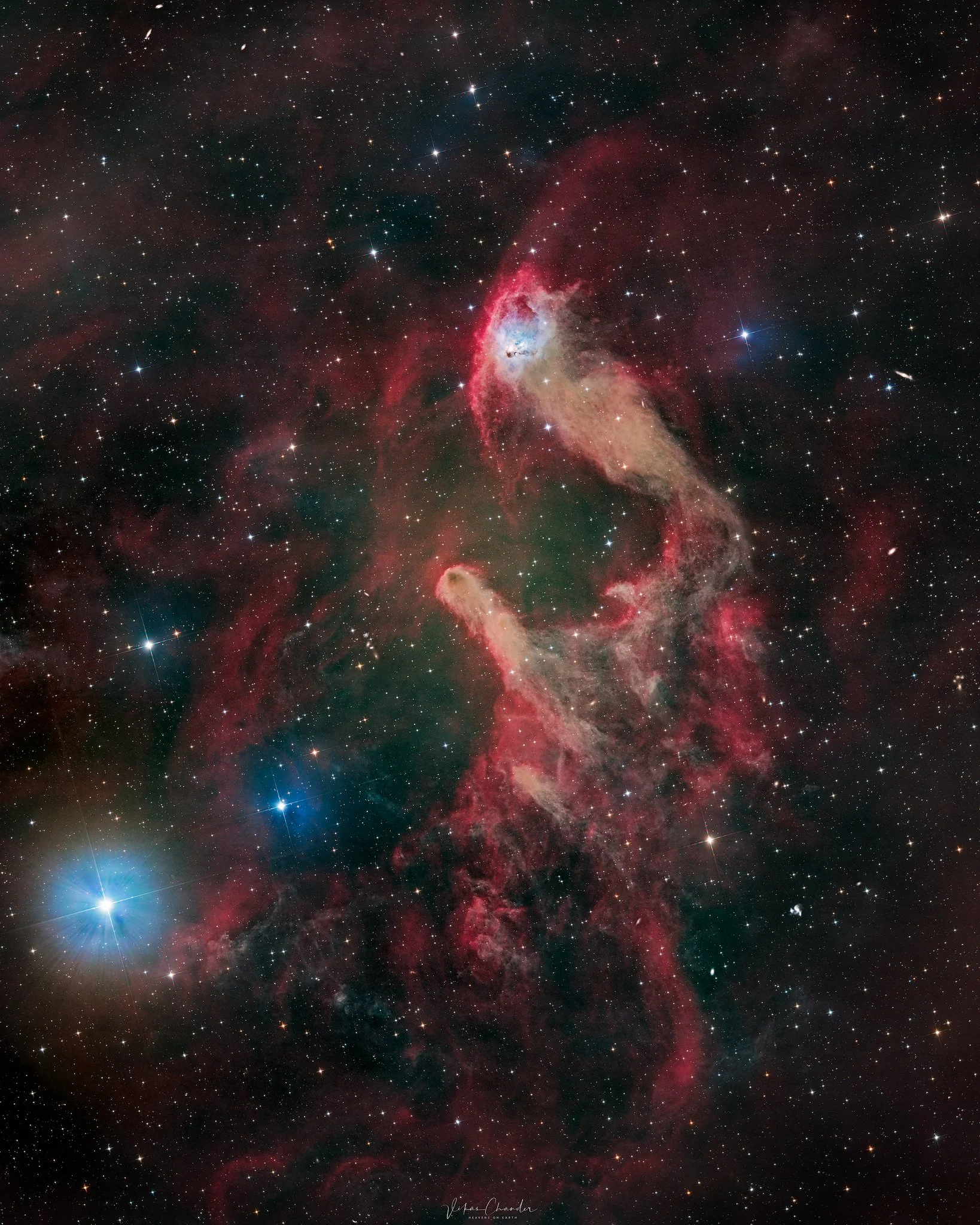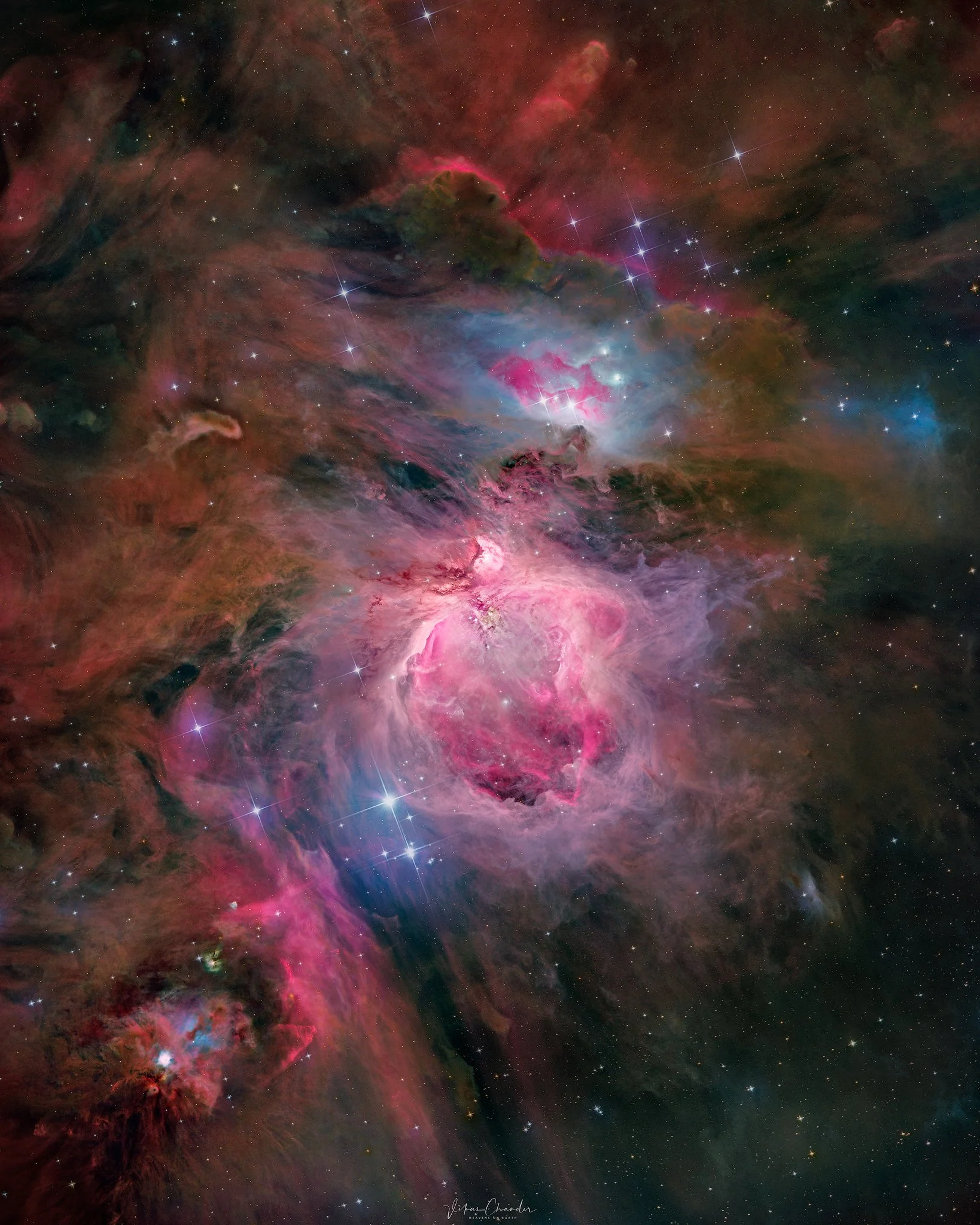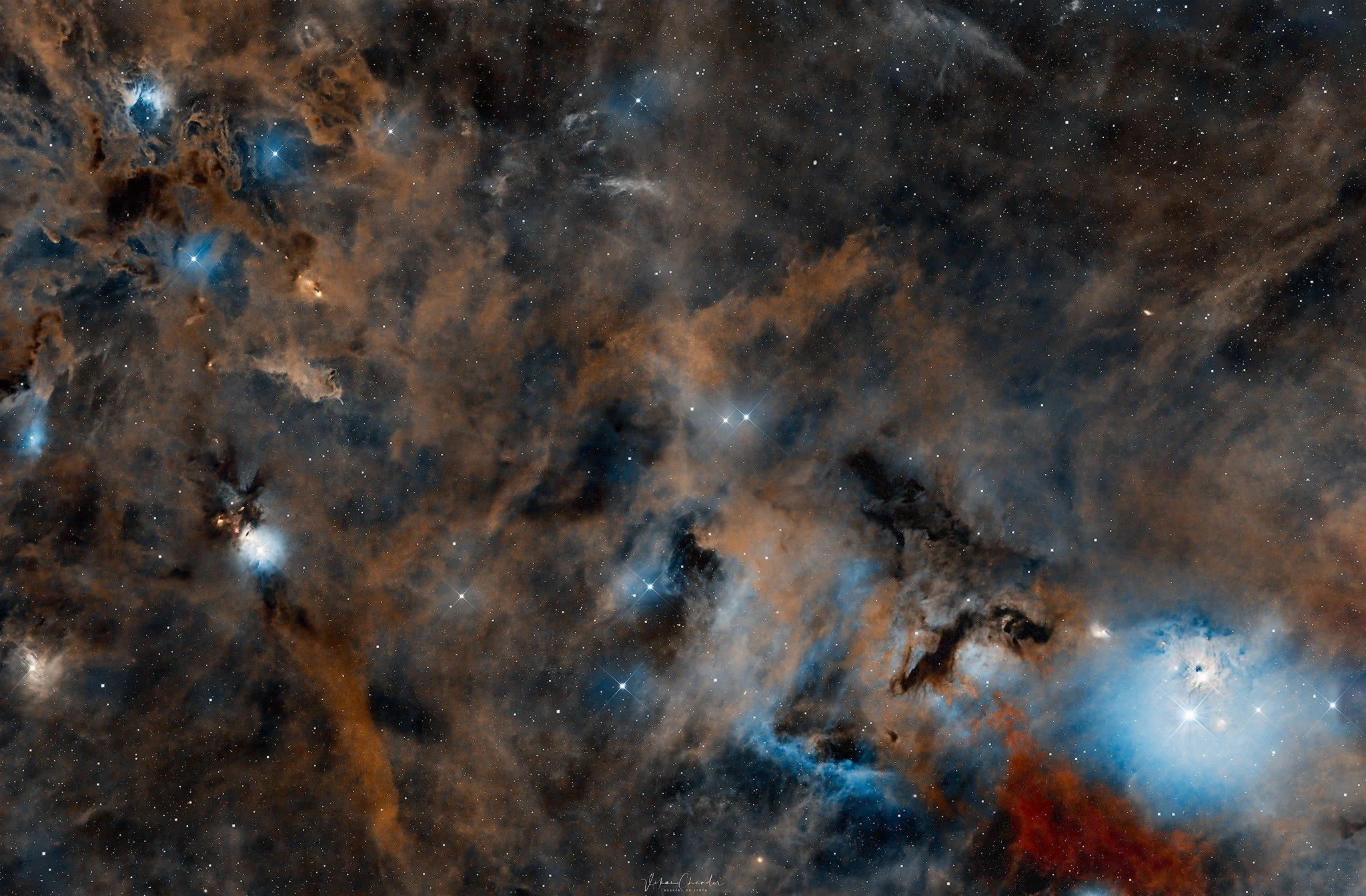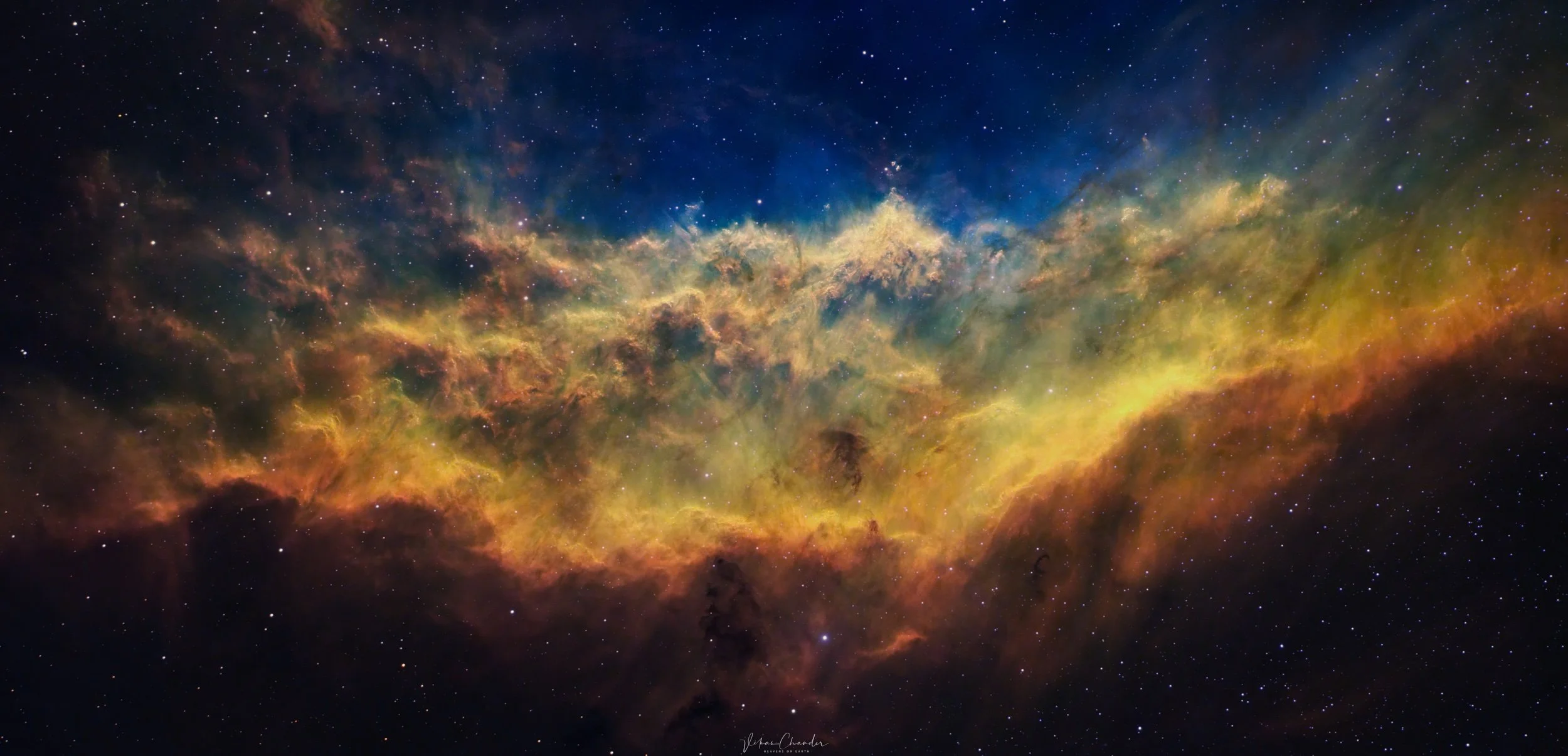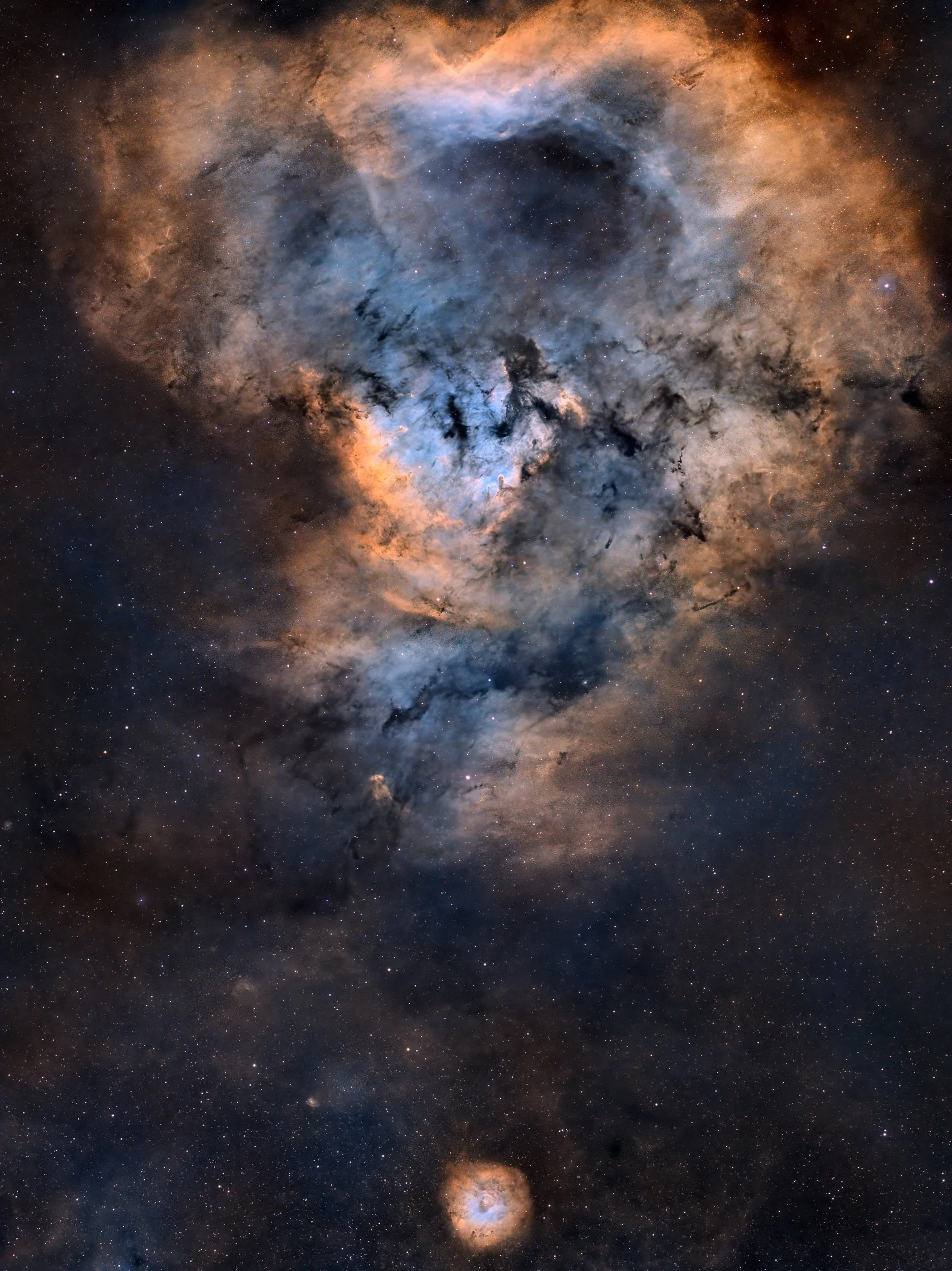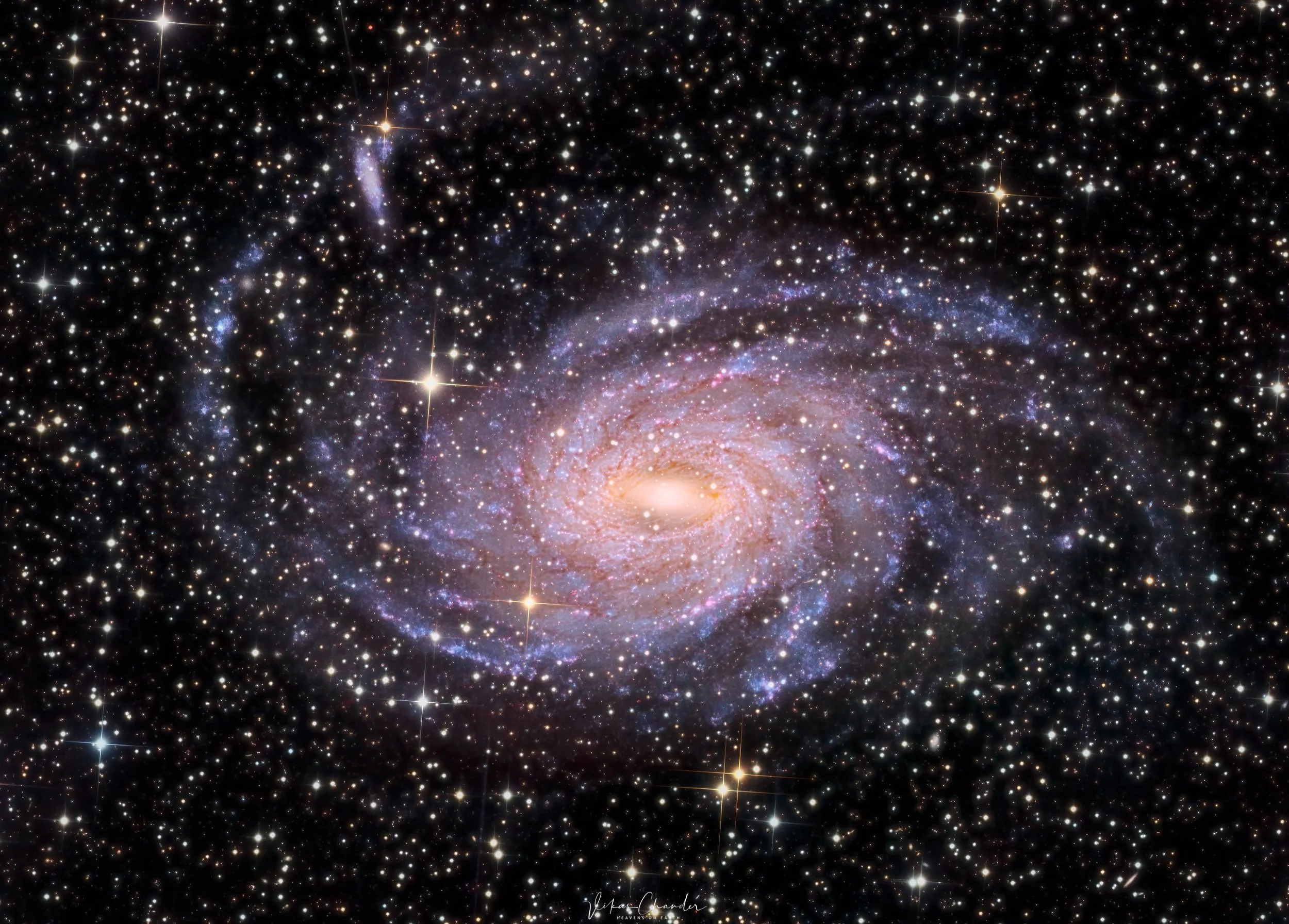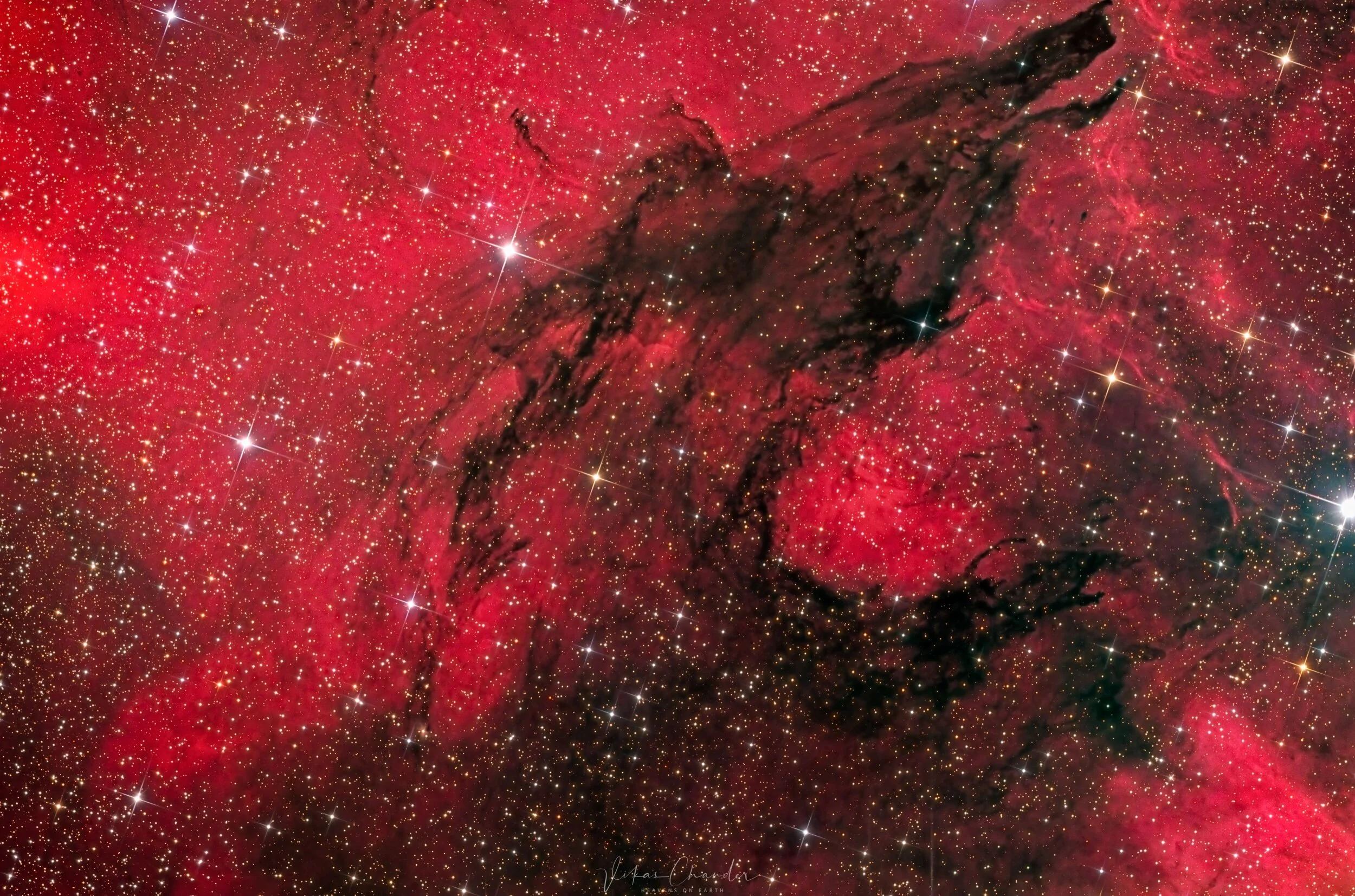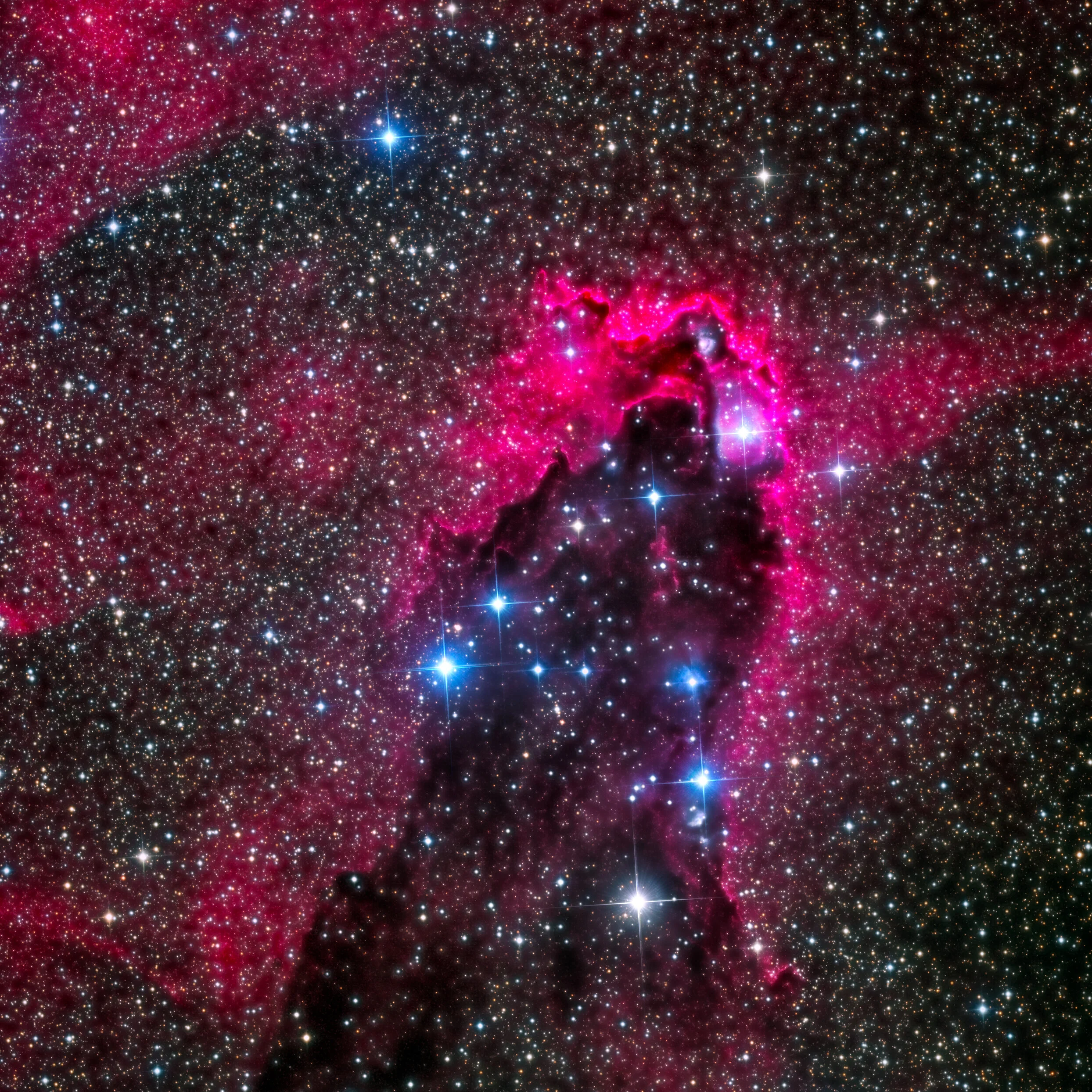
AAPOD2 Image Archives
The Praying Mantis
Image Description and Details : Just above the witch in the sky hovers a praying mantis…..
It fascinates the mind that our ancestors chose to name many objects in the sky based on animals and some of the names which come to mind are the Scorpion, the Bear and even a Dragon. Continuing in the same vein and keeping to traditions, in my mind’s eye I see NGC 1788 as a Praying Mantis. That it lies in close proximity to IC 2118, the Witch Head nebula gives it an even more sinister character. The star Beta Eridani / Cursa shines brightly creating a strong halo while the ionised hydrogen gases in the region contrast it in bright red emissions. The blues from the reflection nebulae and the dust in the region all combine together to form a rich smörgåsbord of color….
Telescope: Takahashi E160ed
Camera: Zwo 6200mm pro
Mount: Software Bisque Paramount Mx+
Observatory : Deep Sky Chile
L = 101 x 300s = 8h25m
R= 101 x 300s = 8h25m
G= 101 x 300s = 8h25m
B= 101 x 300s = 8h25m
Ha = 101 x 600s = 16h50m
Total integration = 50h30m
Acquisition Software = Voyager Advanced
Processing Software = PixInsight
Copyright: vikas chander
Orion
The Orion Nebula is a vast and colorful cloud of gas and dust located in the constellation Orion. It is one of the most famous and easily recognizable nebulae in the sky, and is often referred to as the "Great Nebula in Orion" or the "Orion Nebula Cluster".
Difficult to process but done well here, is the Orion Nebula Trapezium, a group of four young hot stars located within the center of the Nebula. The stars, which are known as Theta-1 Orionis A, B, C, and D, are some of the most massive and luminous stars in the Orion Nebula, and are thought to be less than a million years old.
Dust in Perseus
Image Description and Details : Dust of Perseus
Lying a thousand light years away, in the constellation of Perseus, lies NGC 1333. It is a reflection nebula which basically is a region of dust and gases which are reflected back from the light of a nearby star. It is a region of beautiful chaos arising out of a dense group of stars being born. Dusty regions intrigue me a lot and I am very fascinated by seeing some brilliant images on various platforms of the dusty regions in Taurus and Perseus. They are best brought out with widefield mosaics with long exposures and a deft hand at post processing. A fast scope such as the E180 married to a modern sensor is best suited for the job.
Telescope: Takahashi Epsilon 180 F/2.8 Astrograph
Camera: ZWO ASI 2400MC Pro Colour CMOS 35mm Sensor
Mount: Software Bisque Paramount MX
Observatory : Roboscopes, Spain.
RGB OSC = 60 frames x 300secs x 4 panels
Total integration = 20hrs
Software = PixInsight
Copyright: vikas chander
California Nebula
Image Description and Details : A favourite deep-sky target of astrophotographers is NGC 1499, the California Nebula. The California Nebula is found in the Orion Arm of our Milky Way galaxy, and has been given its informal nickname because its shape resembles the outline of the US state of California. It is a large emission nebula stretching across almost 2.5 degrees of the night sky in the constellation Perseus, with an apparent magnitude of 6.0 and lies approximately 1,000 light-years away. It is very well imaged in broadband filters as well as the narrowband Hubble palette seen here.
Telescope: Takahashi FSQ106-ED F/3.6
Camera: ZWO ASI 2600MM Pro CMOS
Mount: Paramount MX
Observatory : RoboScopes, Spain.
Sii = 51 x 240s
Ha = 38 x 240s
Oiii = 51 x 240s
Total integration = 9h20m
Software = PixInsight
Copyright: vikas chander
The Cosmic Question Mark
Image Description and Details : This is a two panel mosaic revealing a collection of deep-sky objects straddling the border between Cassiopeia and Cepheus. It is sometimes called The Cosmic Question Mark. The large upper section is NGC 7822; and at its bottom is Sh-170 which provides the “dot” of the question mark. Turbulent rings of dust and gases frozen in time like some fossilized explosion, whose atomic emission is powered by energetic radiation from the central hot stars. Their powerful winds and radiation sculpt and erode the denser pillar shapes and clear out a characteristic cavity light-years across the center of the cosmic cloud. Stars continue to be formed in the pillars seen at the core …..
Telescope: Takahashi FSQ 106edx3
Camera: Zwo 2600mm pro
Filters: Antilla 3nm
Mount: Paramount MX
Sii = 45x4m
Ha = 22x4m
Oiii = 34x4m
Total integration = 6h44m per panel
Observatory – RoboScopes, Spain
Copyright: vikas chander
NGC 6744
Image Description and Details : NGC 6744 is the big brother and similar to our own Milky Way, with a disk stretching 175,000 light-years across. A small, distorted companion galaxy is located nearby, which is similar to our galaxy's Large Magellanic Cloud. This companion, called NGC 6744A, can be seen as a blob in the main galaxy's outer arm, at upper left. The galaxy is situated in the constellation of Pavo at a distance of about 30 million light-years. It is one of 50 galaxies observed as part of the Hubble Space Telescope’s Legacy ExtraGalactic UV Survey (LEGUS), the sharpest, most comprehensive ultraviolet-light survey of star-forming galaxies in the nearby Universe, offering an extensive resource for understanding the complexities of star formation and galaxy evolution.
Telescope : Planewave CDK17 f6.8
Camera : SBIG STXL 11002
Mount : Software Bisque Paramount ME
Focal length : 2939mm
Fov : 42 x 29 arcmins
Image Scale : 0.63 arcsec/pixel
Observatory : El Sauce Chile
Filters: HaLRGB
L 22x20m R 15x20m G 15x20m B 16x20m
H 15x30m
Integration: 30h10m
RA: 19h 09m 38s
Dec : -63° 51′ 03″
Copyright: vikas chander
SL17 Wolf Nebula
Image Description and Details : There are few objects of particular note in Lupus, the Wolf constellation, but one of them is this very opaque dark nebula, which lies in the foreground and blocks out the light from thousands of stars beyond. This nebula belongs to the group of 42 dark dust clouds of high visual opacity which are referred to by the initials "SL" in some atlases.
Telescope : Planewave CDK 17 F6.8
Camera : SBIG STXL 11002
Mount: Software Bisque Paramount ME
Pixel scale : 0.63 arcsec/pixel
FOV : 42 x 29 arcmins
Filters :HaLRGB
Integration: 14h30m
Ha 10x30m
L 12x15m R 9x15m G 8x15m B 9x15m
RA center: 16h 03m 29s
DEC center: -42°01′51″
Copyright: Vikas Chander
NGC 6188 Dragons of Ara
Image Description and Details :
The NGC 6188 emission nebula is found near the edge of an otherwise dark large molecular cloud in the southern constellation Ara, about 4,000 light-years away from us. Born in that region only a few million years ago, the massive young stars sculpt the fantastic shapes and power the nebular glow with stellar winds and intense ultraviolet radiation. The recent star formation itself was likely triggered by winds and supernova explosions, from previous generations of massive stars, that swept up and compressed the molecular gas. The field of view spans about four full Moons, corresponding to about 150 light years at the estimated distance of NGC 6188.
Telescope : Astro Physics 12″ Riccardi-Honders f3.8
Camera : ZWO ASI6200
Mount: Software Bisque Paramount ME II
Pixel scale : 1.07 arcsec/pixel
FOV : 88 x 66 arcmins
Filters :SHO & RGB for stars
2 panel mosaic
Integration: 21hrs each panel total 42 hrs
Sii 14x30m Ha 14x30m Oiii 14x30m
R 3x10m G 3x10m B 3x10m
Copyright: vikas chander
Dark Nebula in Scorpius
Image Description and Details :
An ominous dark nebula rises against the a bright star field and glowing gasses, alongside the tail of the Scorpius constellation. The structure spans almost 40 light years and dust and gas collapse to form stars within this dark nebula. Also known as a cometary globule, the cloud is shaped by ultraviolet radiation from the very hot stars in NGC 6231. The ultraviolet light also illuminates the reddish glow of hydrogen gas. Hot stars embedded in the dust can be seen as bluish reflection nebulae. This dark nebula, NGC 6231, and associated nebulae are about 5,000 light-years away.
Telescope : Planewave CDK 17 F6.8
Camera : SBIG STXL 11002
Mount: Software Bisque Paramount ME
Pixel scale : 0.63 arcsec/pixel
FOV : 42 x 29 arcmins
Filters :LRGB & Ha
Integration: 28hrs
Observatory : El Sauce
Software: PixInsight & Photoshop
Copyright: vikas chander



